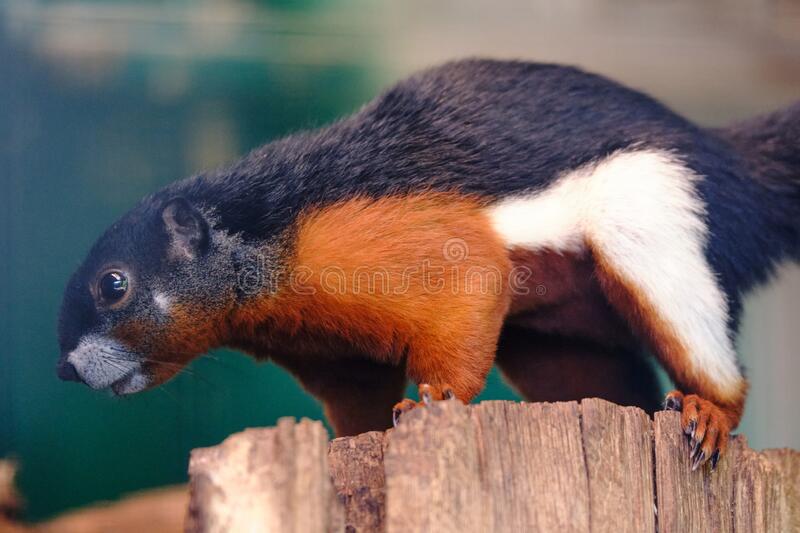ANIMAL: Prevost’s Squirrel Callosciurus prevostii Type of Animal: Squirrel Habitat: Forests, cultivated areas, gardens, plantations Location(s): Thai-Malay Peninsula, Sumatra, Borneo, nearby smaller islands. Introduced to N Sulawesi. Appearance: Top of head/back/tail jet-black or brown, reddish-brown to reddish-orange to rich rufous underbelly, white line separates 2 colors, flat tail, whitish thighs/flanks, grey to grey-white cheeks, subspecies in N, C, & E Borneo have grey or olive-green thighs, orange cheeks, grizzled/olive-grey upperparts, grey to grey-banded tail, most subspecies tricolored, 4 subspecies from Banggi, N Sumatra, NE Borneo, & Labuan dark & bicolored w/ black tail/thighs/cheeks & rich rufous below Food/Diet: Fruits, nuts, seeds, buds, flowers, insects, insect larvae, eggs, small birds, vegetables, greens, reptiles, legumes Status in Wild: Stable Conservation: Breeding in zoos & wildlife centers Lifestyle: Solitary, male-female pairs, or family groups of a female or female-male pair w/ 1-3 sets of offspring (usually singlets or twins, sometimes triplets or quadruplets). Additional Info: Called: Male: Buck/Boar Female: Doe/Sow Young: Kit Group: Pair Weight: Adult: 11 oz Young: 2.4 oz Gestation: 5-7 weeks Life Span: 10 years in wild, 15 years in captivity Body Length: 8-11 in Tail Length: 3-10 in Main predators are carnivorous mammals, raptors, snakes, monitor lizards, crocodilians, & hornbills. Highly arboreal rarely coming to the ground. Sharp claws well adapted for clinging to tree trunks. Tail helps animals balance while running/climbing as well as acting as rudders when jumping. Born naked, toothless, & helpless w/ eyes closed, becoming fully furred at 6 weeks old. Females can produce up to 3 sets of offspring a year. Active during day (diurnal), though sometimes crepuscular (active at dawn/dusk). Rest in tree hollows or on tree branches in nests made of leaves & twigs. Though stable, habitat loss, wildlife trade, & persecution by farmers potential threats. They have excellent vision. When eating, they squat on haunches holding food in front paws. Vocalizations include birdlike sounds, harsh alarm calls, trilling, & whistling. Fun Fact(s): Due to diet, play important role in seed dispersal. Like most rodents, teeth never stop growing. Also called Asian Tricolored Squirrel, Beautiful Squirrel, & Ornamental Squirrel due to colors. One of most colorful of all squirrel species. Due to tropical climate they come from, they don’t hibernate. Can leap 8-10 ft between branches.

